All Images
Research News
Computers play a crucial role in preserving the Earth

Kenyan pastoralist use the GrazeIt app to take a picture of the vegetation and submit a survey.
Credit: Nathaniel Jensen, Cornell University
Download the high-resolution JPG version of the image. (39.4 KB)
Use your mouse to right-click (Mac users may need to Ctrl-click) the link above and choose the option that will save the file or target to your computer.
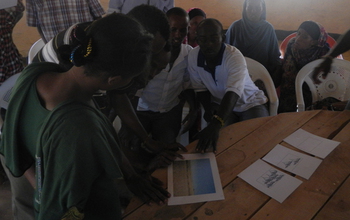
A focus group of Kenyan pastoralists helped the research team develop a classification system for vegetation and design cell phone icons to represent it.
Credit: Nathaniel Jensen, Cornell University
Download the high-resolution JPG version of the image. (5.8 MB)
Use your mouse to right-click (Mac users may need to Ctrl-click) the link above and choose the option that will save the file or target to your computer.
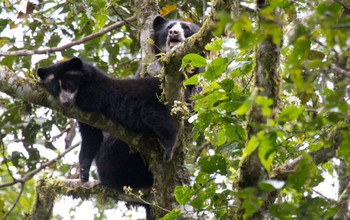
A female Andean Bear with her cub. NSF-supported researchers developed improved computing methods that can determine the optimal wildlife corridors for preserving endangered animals considering also socioeconomic aspects.
Credit: Santiago Molina, San Francisco University of Quito, Ecuador
Download the high-resolution JPG version of the image. (89.9 KB)
Use your mouse to right-click (Mac users may need to Ctrl-click) the link above and choose the option that will save the file or target to your computer.
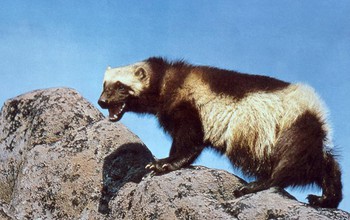
Wolverine and lynx, which require large expanses of undisturbed habitat, are found in the Yellowstone ecosystem. NSF-supported researchers helped design wildlife corridors that connected reserves and parks and improved the movement of species at a substantial fraction of the cost compared to hand-designed corridors, while also considering trade-offs for multiple species.
Credit: National Park Services
Download the high-resolution JPG version of the image. (182.0 KB)
Use your mouse to right-click (Mac users may need to Ctrl-click) the link above and choose the option that will save the file or target to your computer.
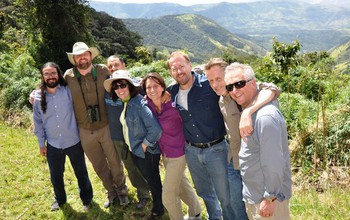
CompSustNet members in Ecuador's cloud forest. From left to right: Rich Bernstein, (Cornell), Chris Wood (Cornell Lab of Ornithology), Santiago Molina (Ecuador), Carla Gomes (Cornell), Angela Fuller (U.S. Geological Survey and Cornell), Andy Royle (USGS Patuxent Wildlife Research Center), Jeff Mecham (Ecuador), Greg Poe (Cornell).
Credit: Julián Larrea, Ecuador
Download the high-resolution JPG version of the image. (250.5 KB)
Use your mouse to right-click (Mac users may need to Ctrl-click) the link above and choose the option that will save the file or target to your computer.
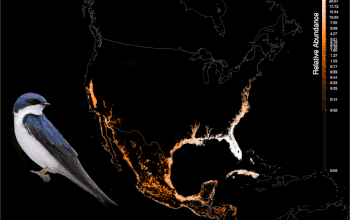
This animation is an example of the application of computational sustainability techniques for predicting population abundances across broad spatial and temporal scales. The animation shows the annual cycle of the entire tree swallow population. The "hotter" the color, the higher relative abundance of the population at that location. This visualization allows us to see how tree swallows migrate across the continent and to identify the most important regions during each phase of the journey.
In the winter, tree swallows concentrate into distinct eastern and western sub-populations. As the spring migration begins, these populations explode northward and expand across the entire continent into their breeding grounds. The fall migration proceeds at a more leisurely pace as the populations return south, separating, and then concentrating into the Central Valley of California, the lower Mississippi River valley and Florida.
The animation was produced using the Spatio-Temporal Exploratory Model to predict population abundances across broad spatial and temporal scales. By relating local environmental features derived from NASA remote sensing data to observations of species from eBird (eBird.org), a citizen science program run by the Cornell Lab of Ornithology, the model can discover complex spatio-temporal patterns and make predictions at unsampled locations and times.
Credit: Daniel Fink, Cornell Lab. of Ornithology
Download the high-resolution 7S_CD469755-F623-4F64-B784-C2F555EC6994 version of the image. (3.4 MB)
Use your mouse to right-click (Mac users may need to Ctrl-click) the link above and choose the option that will save the file or target to your computer.
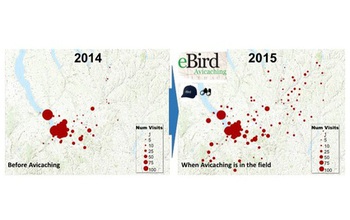
Using computational sustainability techniques, researchers developed Avicaching, a game that incentivizes birders to visit under-sampled locations. Birders accrue Avicaching points towards a lottery for birding gear prizes. The map shows an increase in birding visits to remote locations after the introduction of Avicaching in 2015.
Credit: Yexiang Xue, Cornell University
Download the high-resolution JPG version of the image. (110.2 KB)
Use your mouse to right-click (Mac users may need to Ctrl-click) the link above and choose the option that will save the file or target to your computer.


